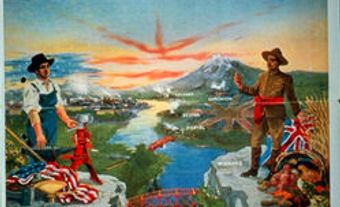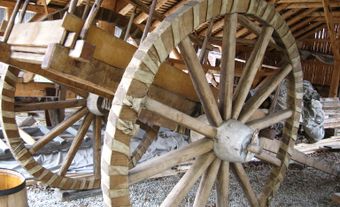
Prairie Dry Belt Disaster
Situated in southeastern Alberta and southwestern Saskatchewan, the prairie dry belt was originally intended as a ranching preserve. Under insistent pressure from promoters and settlers, and blessed by dry farming "experts," the region was unwisely opened for homesteading by the Dominion. After the 1908-12 land rush, the dry belt yielded freakish, mammoth harvests in 1915 and 1916. Then drought struck with fury. In the worst-hit subregions, mostly in Alberta, not a crop of consequence was reaped until 1927. Combined with other postwar farm ills, these troubles spelled calamity.
Five major investigations were commissioned, but to little avail. Between 1921 and 1926, 138 townships in southern Alberta, comprising nearly 3.2 million acres (1.3 million ha), lost at least 55% of their population; by 1926 80% of the Tilley-East country was permanently evacuated. Farm abandonments in Alberta and the southeast in the twenties exceeded those of the Great Depression. Fleeing settlers moved west, north and mostly south to the US whence most had come. In Alberta, which bore the brunt, the catastrophe stimulated the election of the United Farmers of Alberta in 1921, new dry-farming techniques, more irrigation, large school divisions, county government, the "special areas" and a revolutionary arrangement between creditors and debtors - the Debt Adjustment Act.
For the dubious southeast, the 1930s was merely a bitter sequel. In the end, the great blunder of settlement ruined thousands, precipitated a spate of ghost towns, and nearly bankrupted Alberta.

 Share on Facebook
Share on Facebook Share on X
Share on X Share by Email
Share by Email Share on Google Classroom
Share on Google Classroom


